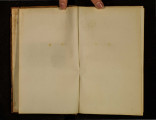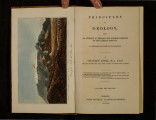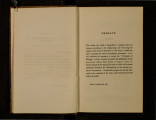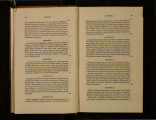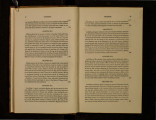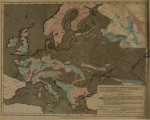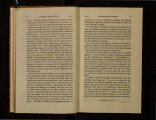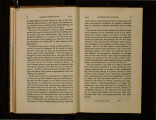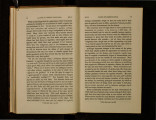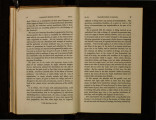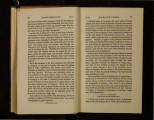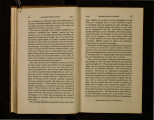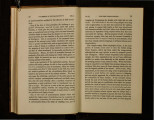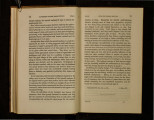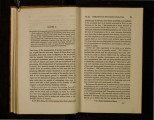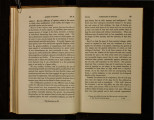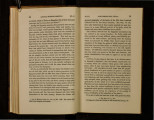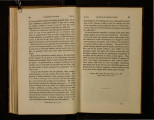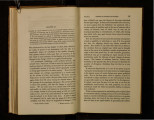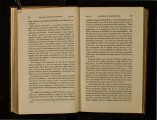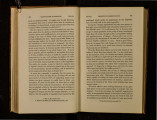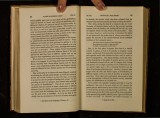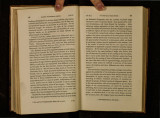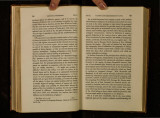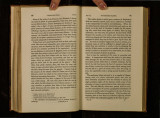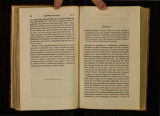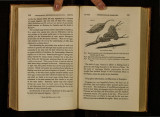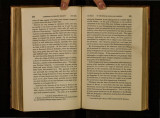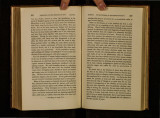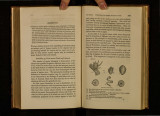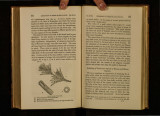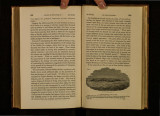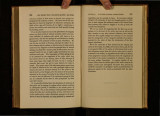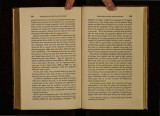| OCR Text |
Show 98 DRIFTING OF ANIMALS [Ch. VI. GanO'CS with living trees standing erect upon thein. The A mabz o n' , the ConOb 'o ' and the Orinoco, also produce these v• er-dant rafts, which are formed in the manner already descr1bed when speaking of the great raft of the Atcha~alaya, an ar": of the Mississippi, where a natural bridge of timber, t~n m1les long, and more than two hundred yards ~ide, has ex~sted for more than forty years, supporting a luxurious vege~at~on, and rising and sinking with the water which flows beneath1t • That this enormous mass will one day break up and send down a multitude of floating islands to the gulf of Mexico, is the hope and well-founded expectation of the inhabitants of Louisiana. On these green isles of the Mississippi, observes Malte-B~·unf, young trees take root, and the pisliar and nenuphar display their yellow flowers; there serpents, birds, and the cayman alligator, come to repose, and all are sometimes carried to the sea and engulphed in its waters. In a memoir lately published, a naval officer informs us, that as he returned from China by the eastern passage, he fell in, among the Moluccas, with several small floating islands of this kind ' covered with mangrove-trees interwoven with un.d .er - wood. The trees and shrubs retained :their verdure, rece1vmg nourishment from a stratum of soil which formed a white beach round the margin of each raft, where it was exposed to the washing of the waves and the rays of the sun+· The occurrence of soil in such situations may easily be explained, for all the natural bridges of timber which occasionally connect the islands of the Ganges, Mississippi, and other rivers, with their banks, are exposed to floods of water, densely charged with sedi~e~t. . Captain W. H. Smyth informs me, that when crmzmg m the Cornwallis amidst the Philippine Islands, he has more than once seen, after those dreadful hurricanes called typhoons, floatinO' islands of wood, with trees growing upon them, and that ships have sometimes been in imminent periJ, in consequence of mistaking them for terra-firma. .. St'e ante, vol. i. p. 188. t System of Geography, vol.:v. P• 157. t Uniteu Service Journal, No. 241 p. 607, Ch. VI.] ON FLOATING ISLANDS. 99 It is highly interesting to trace, .in imagination, the effects of the passage of these rafts from the mouth of a large river to some archipelago, such as those in the South Pacific, raised from the deep, in comparatively modern times, by the operations of the volcano and the earthquake, and the joint labours of coral animals and testacea. If a storm arise, and the frail vessel be wrecked, still many a bird and insect may succeed in gaining, by flight., some island of the newly-formed group, · while the seeds and berries of herbs and shrubs, which fall into the waves, may be thrown upon the strand. But if the surface of the deep be calm, and the rafts are carried along by a current, or wafted by some slight breath of air fanning the foliage of the green trees, it may arrive, after a passage of several weeks, at the bay of an island, into which its plants and animals may be poured out as from an ark, and thus a colony of several hundred new species may at once be naturalized. We may remind the reader, that we mereiy advert to the transportation of these rafts as of extremely rare and accidental occurrence; but it may account, in tropical countries, for some of the rare exceptions to the general law, of the confined range of species. Many of the cetacea, the whales of the northern seas for example., are found to desert one tract of the sea, and to visit another very distant, when they are urged by want of food or danger. The seals also retire from the coasts of Greenland in July, return again in September, and depart again in March, to return in June. They proceed in great droves northwards directing their course where the sea is most free from ice, and are observed to be extremely fat when they set out. on this expedition, and very lean when they come home again*· Some naturalists have wondered that the sea-calves, dolphins, and other marine mammalia of the Mediterranean and Euxinc should be identical with those found in the Caspian ; and among. other fanciful theories, they have suggested that they may dive through subterranean conduits, and thus pass from • Krantz, vol. i.11, 1291 cited by Goldsmitlt1 Nat. Hist.1 vol. iii. p. 260, II~ |




